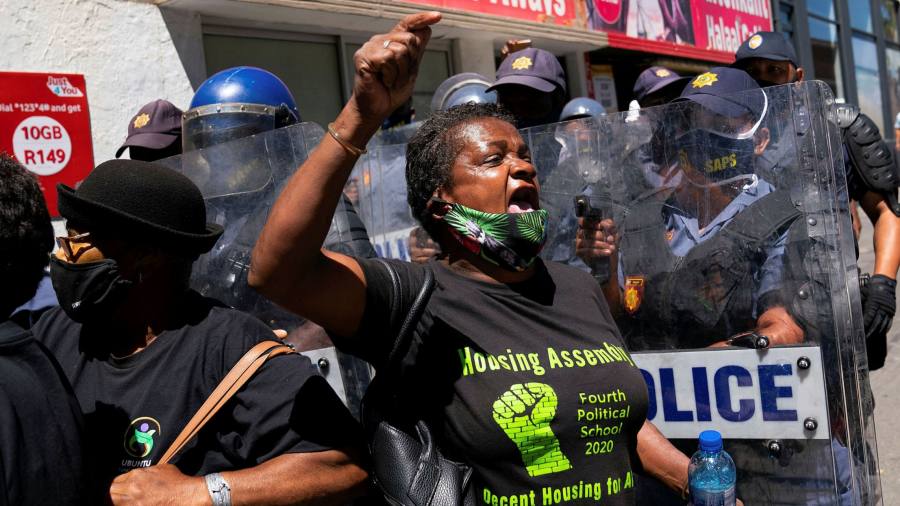[ad_1]
South Africa is pushing ahead with plans to shore up its precarious public finances as officials warn the economy is “dangerously overstretched†despite the recent boom in commodity prices.
Finance minister Tito Mboweni hailed “significant improvement†as he delivered the annual budget on Wednesday and said that state debts that will hit 80 per cent of GDP this year will peak below 90 per cent by 2025, lower than initially feared.
But Mboweni warned that President Cyril Ramaphosa’s government was not “swimming in cash†despite a major recent tax windfall. The Treasury now expects to collect almost 100bn rand ($6.8bn) more tax than expected this year after a surge in earnings for miners. This compares with a projected overall tax shortfall of more than 200bn rand. Still, the finance minister made clear that spending cutbacks would be necessary.
“Continuing on the path of fiscal consolidation during the economic fallout was a difficult decision. However, on this, we are resolute,†Mboweni said. “We remain adamant that fiscal prudence is the best way forward. We cannot allow our economy to have feet of clay.â€
The pandemic has hit South Africa hardest on the continent, with 1.5m cases recorded despite a tough lockdown. An intense second wave is receding and the first vaccinations of health workers started this month. More than 10bn rand will be allocated to vaccines over the next two years, Mboweni said.
Even before the pandemic’s economic hit, a decade of stagnant growth, corruption and bailouts for indebted state companies such as the Eskom electricity monopoly rotted away what was once a prudent fiscus compared with its emerging market peers.Â
Government spending has grown four per cent a year since 2008, versus 1.5 per cent annual growth in real GDP. The country’s credit rating was cut to junk status last year. Despite this year’s cash boost, the state expects to borrow well over 500bn rand per year over the next few years. The cost to service state debts is set to rise from 232bn rand this year to 338bn rand by 2023, or about 20 cents of every rand in tax.
The fiscal belt-tightening will have implications for South Africa’s spending on health and social services. On Wednesday Mboweni announced below-inflation increases in the social grants that form a safety net for millions of South Africans. “We are actually seeing, for the first time that I can recall, cuts in the social welfare budget,†said Geordin Hill-Lewis, Mboweni’s shadow in the opposition Democratic Alliance.
The finance minister is also facing a battle with union allies of the ruling African National Congress over a plan to cap growth in public sector wages. South Africa lost 1.4m jobs over the past year, according to statistics released this week. The jobless rate — including those discouraged from looking for work — was nearly 43 per cent in the closing months of 2020.
The South African treasury expects the economy to rebound 3.3 per cent this year, after a 7.2 per cent drop last year, and to expand 2.2 per cent and 1.6 per cent next year and in 2023 — growth rates that are widely seen as too low in the long run to sustain healthy public finances.
“The key challenges for South Africa do however persist, clever funding decisions aside,†Razia Khan, chief Middle East and Africa economist for Standard Chartered, said. “Weak structural growth and the Eskom debt overhang must still be addressed.â€Â
[ad_2]
Source link






